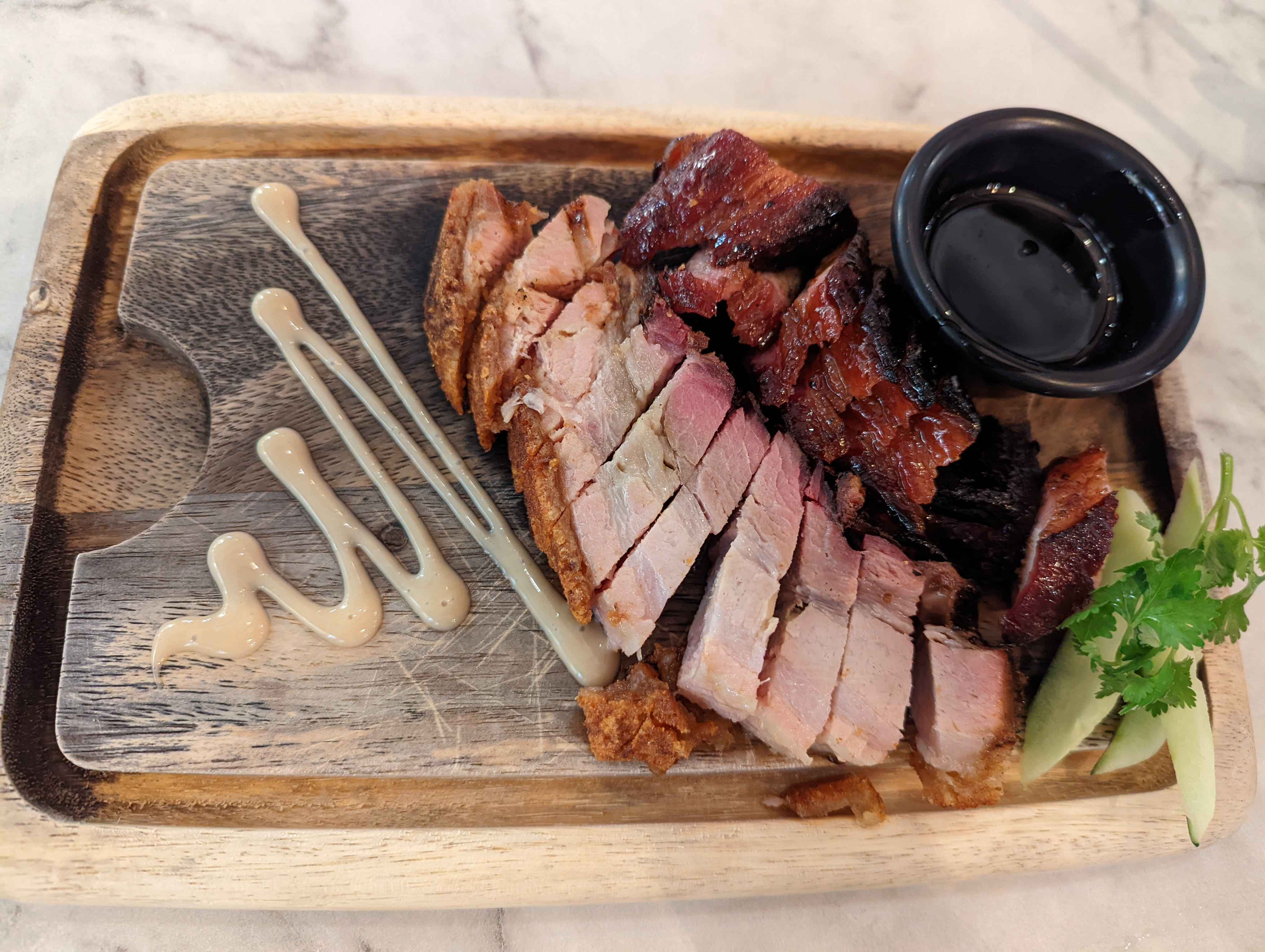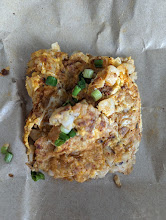
Guide to Hong Kong versus Singapore
When I first arrived in Singapore, I recall ordering barbecue pork rice at a hawker center, thinking it would taste like the same comforting dish I had in Hong Kong.
However, after receiving my plate of food, I found the dish surprisingly different. The cha siu was thinly sliced versus thickly sliced, there was too much sauce and the sauce was too sweet and viscous. In fact, a barbeque pork rice in San Francisco drew a much closer comparison to that of Hong Kong’s. In today’s post, we’ll dissect some iconic differences between Hong Kong Chinese cuisine versus Singapore Chinese cuisine. For best comparison, we’ll use that of a Cha Chaan Teng / Maxim’s in Hong Kong versus that of a hawker center / coffee shop in Singapore so we can get closest to what the general population consumes on a day to day. Of course, the food items will be much more similar in an authentic higher end eatery in both countries, but that won’t be our focus for today. In case you missed my earlier post on the best dim sum in Singapore, check it out too.
History behind Hong Kong versus Singapore Chinese cuisine
Chinese cuisine is renowned worldwide for its rich flavors, diverse ingredients, and culinary traditions that have evolved over centuries. Two prominent centers of Chinese culinary excellence are Hong Kong and Singapore. Both regions boast a vibrant and distinct Chinese food culture that reflects their unique historical, cultural, and geographical contexts.
Chinese immigrants began settling in Hong Kong during the early colonial period, bringing their culinary traditions with them. Hong Kong’s cuisine is heavily influenced by Cantonese culinary traditions, renowned for its finesse, subtle flavors, and emphasis on fresh ingredients. It stands out with its delicate cooking techniques, preserving the natural taste and texture of ingredients. The cuisine showcases a wide range of ingredients, including seafood, poultry, and exotic delicacies, creating a harmonious balance of flavors and textures. Light seasonings, such as soy sauce and fermented ingredients, enhance the natural flavors without overpowering them. Simply exquisite.
Chinese cuisine entered Singapore through a combination of historical factors, migration, and cultural exchanges. Chinese immigrants from various regions, such as Fujian, Guangdong, and Hainan, brought their culinary traditions when they settled in Singapore. Additionally, Singapore has developed its own blend of Chinese cuisine, infused with Malay, Indian, and Peranakan influences. Hence, the cuisine incorporates an additional array of herbs, spices, and sauces in their dishes.
Let’s start off with seasoning behind the two cuisines
When my parents visited Singapore two years back, they commented that ‘Singapore Chinese food is like Hong Kong Chinese food 25 years back. Oilier, saltier, heavier, bolder and more fragrant.’ Basically, more flavourful. A couple of things that I notice from hawker centers that may be surprising to Hong Kong visitors or expats -
- Jalapenos - everybody asks for Jalapenos. These are green chilis that are pickled and sliced and go well with any noodle or rice based dish. I love the pickled jalapenos in Singapore as they add a burst of flavour to your meal
- Chili - everybody asks for Chili. By chili, we mean this as something like 豆瓣醬 without the fermented bean paste in. Think something similar to Lao gan ma without the additional crispiness. Singaporeans love their spice and chili adds an extra dimension to the dish. To be fair, this is something you’ll also find in Hong Kong Cha Chaan Tengs
- Gravy - aka more sauce. This can be curry if you’re eating a Hainan curry rice, or more 勾芡 (mostly chicken soup thickened by starch) on a rice noodle dish. Locals love their gravy and often ask for their dishes to be drenched in it. Not the most refined approach but hey, people are saucy. I much prefer a moderate amount instead of having food all slathered by sauce
- Soy sauce - it’s not uncommon to see soy sauce in a tub or little bag with diced up red chilis inside. Be it with soup noodles or rice, people want their soy sauce to their dish. It’s horrible for your sodium levels but the takeaway is Singaporeans love their bold flavours
Same same but different food dishes
On to food dishes that share the same name but are executed differently.
Carrot cake (蘿蔔糕)
Hong Kong’ers are familiar with our usual rectangular block carrot cakes that we get at the usual dim sum establishments. Singapore carrot cake is different. Singapore carrot cake, or chai tow kway, differs from Hong Kong carrot cake in both preparation and flavor. Singapore carrot cake is stir-fried and made with cubes of radish cake, resulting in a soft yet slightly crispy texture. It is seasoned with a combination of sauces, including soy sauce and oyster sauce, and often spiced up with chili paste. On the other hand, Hong Kong carrot cake is steamed, sliced, and then pan-fried, offering a firmer texture and a subtle sweet and savory taste. The two versions showcase distinct cooking methods and flavor profiles, highlighting the diverse culinary variations within Chinese cuisine.
 |
|---|
| Radish and flour cubes pressed and fried together with egg and scallions |
Barbeque pork (叉燒)
Let me be clear here. There’s some damn good cha siu in Singapore. I’ve talked about Jiang Nan Chun before for traditional cha siu, and Fook Kin is another one of my favourites for a more modern twist to cha siu. All that being said, if you visit a generic hawker store i.e. to a wanton chasiu noodle store, the cha siu you will get will differ from an ingredient selection standpoint and a technique standpoint.
- Thinly sliced versus thickly sliced
- Leaner versus fattier
- Dyed artificially red
- No honey glaze
- Rice will be drenched with soy sauce
Pretty much, the Singapore version is a more stripped down version of the Hong Kong iteration given slimmer margins of operations as well. If you are from Hong Kong, you will notice the difference versus a HK barbeque meat (燒臘) shop. The same applies to pork belly. A much thinner and leaner cut.
 |
|---|
| Fook Kin. The thick cut slices that you usually find in Hong Kongd |
Fried Rice (炒飯)
If we want to be more specific, let’s compare yangzhou fried rice (揚州炒飯). Yangzhou fried rice is a flavorful Chinese dish made with ingredients such as diced cha siu, shrimp, eggs, carrots, peas, and green onions. The ingredients are stir-fried together with soy sauce, oyster sauce, and seasonings. At least that’s what we’re familiar with in Hong Kong. In Singapore. In Singapore, a lot of the core ingredients are stripped away. Again, an adaptation to maintain margins given prices are so much cheaper in Singapore. You’re usually left with tiny pieces of cha siu, scallions and eggs. This is not a critique to the dish itself, but just a heads up of the differences. All that being said, wok hey is still there and taste is just fine.
Congee
Singapore congee, often known as “bubur,” features a rich and thick consistency with a wide range of ingredients. It is typically cooked with long-grain rice and a variety of meats, such as chicken, pork, or seafood. Singaporean-style congee incorporates various herbs, spices, and condiments to enhance the flavor, such as ginger, garlic, fried shallots, and soy sauce. The result is a flavorful and hearty porridge, often served with additional toppings like century eggs, sliced spring onions, and crispy fried dough fritters (you tiao). In contrast, Hong Kong congee, also known as “jook,” tends to have a smoother and silkier texture. It is traditionally made with short-grain rice, which creates a softer consistency. Hong Kong-style congee is typically simpler in terms of ingredients, often featuring just a few key components such as lean pork or fish. The focus is on the delicate and subtle flavors of the main ingredient, allowing the natural taste of the rice and meat to shine.
It fascinates me how these basic dishes all have their own local twists to it. They’re all delicious too.
A little on dining know-hows
Small little things on dining know-hows caught my attention after visiting hawker centers a few times.
- Water / tea is not free: It usually is for a cha chaan teng but not in a coffee shop / hawker center in Singapore
- You have to busk: Saves labour cost especially in community eateries Portion size flexibility: You have the ability to select your meal size. Small rice? $4. Medium rice? $4.5. Large rice? $5
- Plastic bags for drinks: Drinking coffee? Have it in a plastic bag. Obviously, it’s a plastic bag tailored for a drink and you stick a straw through it but it’s definitely old school
- Wet towels / tissue: Bring your own. If you dine in a coffee shop and they have a wet wipe, it’ll most likely cost you money
I hope this post shows the little nuances between basic food items and dining experiences between Hong Kong and Singapore. What other differences have you noticed? Comment in your thoughts. Subscribe now to see more content like this.